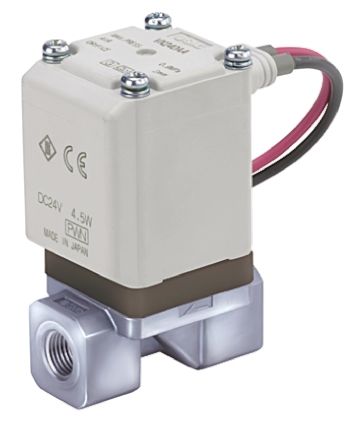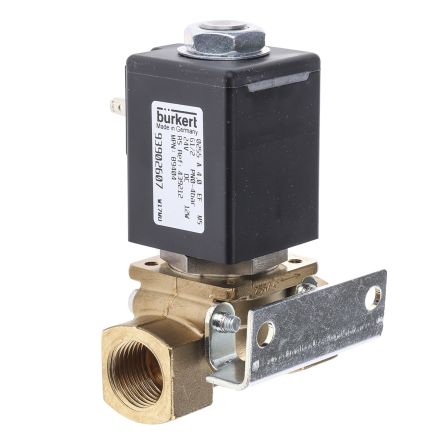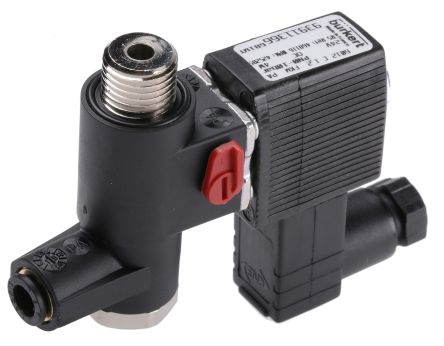Everything You Need To Know About Solenoid Valves

In our comprehensive guide we look at what solenoid valves are, what they’re used for, as well as the different types that are available on the market.
What is a solenoid valve?
Solenoid valves are incredibly useful to engineers and end users due to their automatic operation. Because they can be installed and used anywhere that gas or fluid flow needs to be automatically controlled and monitored, the requirement for an engineer to be physically present to operate a valve manually is removed with the use of solenoids.
In this guide, we’ll look more closely at how solenoids work, how to understand some of the various sorts of solenoid valves currently available on the worldwide market, and what types of applications and environments they’re most commonly used in.
What are solenoid valves used for?
You can buy solenoid valves intended for use with all manner of liquid and gaseous media, including specialist configurations to cover the majority of industrial, production and laboratory environments. Models are available aimed at a very wide range of applications involving various media, such as:- Hot and cold liquids
- Compressed air
- Steam
- Mineral oil, natural oil and other oils (with and without additives)
- Aqueous solutions
- Aggressive and combustible gas
Solenoid valves are also used in a wide range of smaller everyday domestic appliances, such as to control the flow of water entering a washing machine during a rinse and drain cycle. Again, the potential applications of solenoid valves are near limitless, and their usage in many everyday systems is increasing rapidly - typical examples you’ll encounter on a regular basis might include:
- Heating and water flow systems
- Lawn sprinklers and irrigation networks
- Car washes
- Swimming pool drainage and top-up controls
- Medical and dental equipment
- Refrigeration and air conditioning
- Paintball guns, pressure pumps and other compressed air tools
- Calibration and test stands
How does a solenoid valve work?
Solenoid valves are essentially flow control units with the ability to either restrict or enable media flow, depending on type of valve in question and according to whether or not they’re in a currently activated (energised) state at any given time. But exactly how does a solenoid valve work in practice?In a standard ‘spool’ or ‘poppet’-type solenoid valve, the valve itself is connected directly to a plunger, pivoted armature or other similar device, which for most models will be spring-mounted in some configuration. This plunger is located inside a hollow tube (often referred to as the solenoid ‘core’).
When electrically energised, the the wire coil wound around the outside of this core creates a magnetic field inside the tube. This in turn influences the motion of the plunger, which then pushes or pulls the valve in a particular direction, with the end result being the opening or closing of the flow system.The precise way in which a given solenoid functions - either to open or to close a valve when automatically activated - will depend on the specific type and configuration of valve and solenoid controller chosen,and thus its ‘normal’ operating state.
'Normally open' and 'normally closed' solenoid valves
If a particular solenoid valve is of the ‘normally open’ type:- The valve will remain open whenever the solenoid is not receiving an input signal. The rate of media flow through it will remain at whatever the maximum flow rate of the conduit run or plumbing pipeline (and the media type) would be under normal circumstances
- This ‘normally open’ type of solenoid will cause the valve to be closed automatically (using the electromagnetic force generated in its coil) under an electrical input signal. In short, as the coil becomes energised in a ‘normally open’ solenoid, the valve is pushed shut, and thus the rate of media flow through it is automatically controlled
- As soon as the electrical input signal ceases to be sent to the coil, it will return to its normal state/position, and media flow will either be restricted or enabled again accordingly.
Unsurprisingly, the precise opposite of the above bullet points is true for a ‘normally closed’ solenoid valve type.
Complex solenoid valves
Some types and models of solenoid valve controllers employ further componentry, including advanced circuit technologies, to offer a suite of more complex or responsive functions and features. These might include, for example, the ability to manage proportional flow or pressure control, achieved through coil sensitivity to a broader range of input signal strengths.It’s worth noting that, in fluid dynamics terms, ‘normally open’ (i.e. flow-enabled) valves typically imply the precise opposite meaning to ‘normally open’ gates in electronics systems.
What are solenoid valves made of?
The vast majority of solenoid valves sold on today’s market are manufactured from robust and relatively corrosion-resistant (for obvious reasons!) materials. Depending on the intended usage scenario, these might include: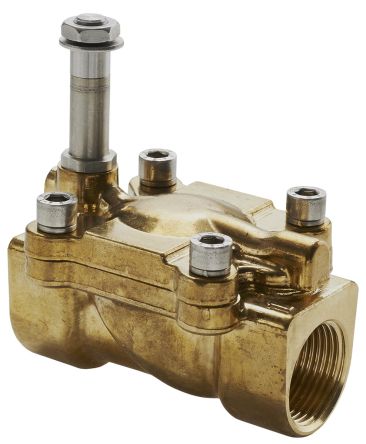
Brass solenoid valves
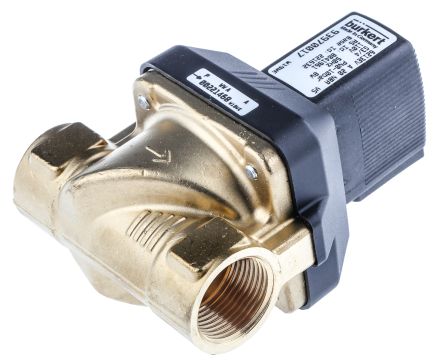
Stainless steel solenoid valves
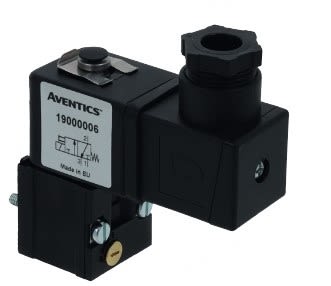
Aluminium solenoid valves
What does a solenoid valve look like?
Valve body - This is main functioning part of the solenoid valve, and includes the input-output ports, valve seats, and the orifice that controls flow.
Electrical solenoid coil - The electromagnet made, from copper windings, which influences the plunger motion when energised
Coil enclosure, housing or tube assembly - Typically a cylinder of non-ferrous metal, sealed at one end, which provides the channel within which the plunger moves in response to electromagnetic forces
Other components you might find in more advanced systems could include, for example, various arrangements of DIN terminals and connectors, providing numerous options for subsequent output signals and onward controls to influence a range of behaviours further along in the system.
2-way solenoid valves
Two-way solenoid valves are therefore sometimes known as simply ‘shut-off’ solenoids. As noted earlier, they’re available in both ‘normally open’ and ‘normally closed’ varieties, according to whether the applications requires flow to be restricted or enabled under standard prevailing conditions.
3-way solenoid valves
In response to an electrical input signal, the open/closed state of these two ports is reversed, allowing for various valve operations to be controlled. Flow can thus be diverted between channels as required, in accordance with the way the port connections have been set up and connected within the larger pipeline system.
Direct operated solenoid valves
Within the few very basic/broad categories of solenoid valve outlined above, there exists a wide range of more specific operating types and functions. One of these typed is a direct operated solenoid valves (sometimes referred to as ‘direct acting’)With direct operated solenoid valves, the energised solenoid acts directly on the valve sealing piston or armature. Therefore the ability of the valve to restrict or enable flow depends on the rated power (in other words, the physical strength) of the component.
Pilot operated solenoid valves
With pilot operated solenoid valves, the opening or closing of the valve is powered by the energy stored in the build-up of pressurised fluid or gas. This is done via a different type of direct acting solenoid valve, which reacts to the balance of pressure on either side of the actuator (often a diaphragm in pilot operated systems)Pilot operated solenoids can be either ‘internally piloted’ or ‘externally piloted.' Internally piloted solenoid valves tend to be used for higher pressure systems, usually found in larger pipeline setups where pressure differentials between wider orifices do the bulk of the work to open or close the valve.
Externally piloted solenoids rely on a ‘third party’ component, such as a spring or armature, to push or pull the valve/diaphragm in the required direction, working in conjunction with the typically lower pressure differentials commonly encountered in smaller pipelines and orifices.
Solenoid valve applications
In terms of basic media compatibility and operating fundamentals, the solenoid options in the list below are all common variants. Many models of solenoid you can buy today will offer specific functionality in one or more of the following areas:
- Water solenoid valve
- Solenoid gas valve
- Solenoid air valve
- Pneumatic solenoid valve
- Hydraulic solenoid
- High pressure solenoid valves
- High performance/fast-acting solenoid valve
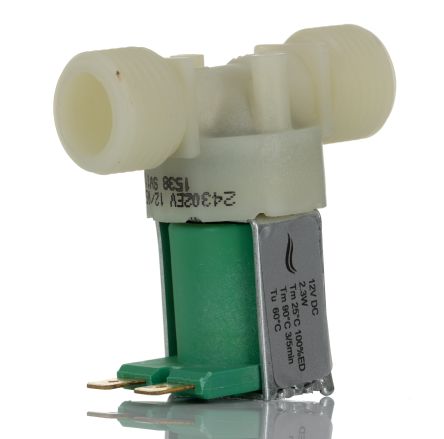
Water solenoid valves
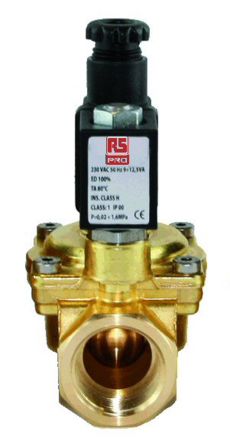
Solenoid gas valves
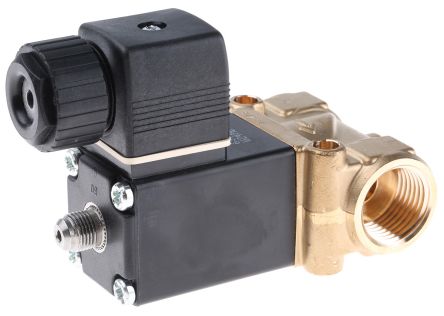
Solenoid air valves
What do I need to consider when purchasing a solenoid valve?
There are many different types of solenoid valves currently sold by suppliers and manufacturers around the world. On the one hand, this is an inherent benefit of their great versatility - the wide range of available solenoid designs and functions means it’s usually possible to pick out a valve type that will precisely suit the application and environment you need to install it in, and the exact role you need it to perform. The trade-off, of course, is that the field can look a bit bewildering at first glance.When choosing a solenoid valve type for installation into a particular pipeline or flow system, the key required specs for consideration will always be as follows:
- Flow rate - A valve that’s too large/overpowered for the required flow rate of a system won’t be cost-effective, and risks wasting media, whilst a valve that’s too small/underpowered for the required flow rate won’t be able to provide accurate or proper actuator function
- Media compatability - It’s very important to always choose appropriate valve for operation with water, air, steam, oils, fuels or any other media
- Pressure - Operating pressure is among the greatest influences on the overall flow rate of a given valve, so needs to be balanced with the system requirements for optimal performance
- Temperature
- Process fitting or mounting type
Manufacturer guidelines for each of the above criteria tend to list the maximum safe rating in each case, so you’ll need to ensure your operating parameters fall below the specified ratings in all cases.
You’ll also potentially need to consider some of the various available solutions for solenoid valve adapters and mounts. Broadly speaking, these will often roughly align with the type of pipeline they’re going to be installed in, for example:
- Compression fittings for gas or water pipes
- Push-in or horsetail fittings for hoses
- PVC fittings for PVC conduit
- Various adapter types, such as sockets, reducer bushings and nipples
For each type of solenoid valve available, you’ll also need to consider appropriate sizing and power requirements. This is done by calculating a match between your precise usage needs/working conditions, and the valve’s rated performance specifications in various areas. To this end, manufacturer guidelines should always be observed across each of the following areas.
For liquid solenoid valves (where liquids are broadly considered incompressible), you will need to consider:
- Rated flow capability of the valve
- Flow rate, often expressed as volume per minute
- Inlet and outlet pressure
- Pressure drop across the valve
- Specific gravity of the fluid in question
For gas solenoid valves, where gases are considered a compressible media, there are a couple of slightly more complex considerations to take into account as well - these might include gas temperatures at various stages of the pipeline, shifting flow rates expressed in cubic feet per hour, and resulting absolute pressures at both the inlet and outlet ports.
Top picks
There’s a wide range of types to choose from – browse our top brands by clicking the buttons below to view the full product ranges.
Parker solenoid valves
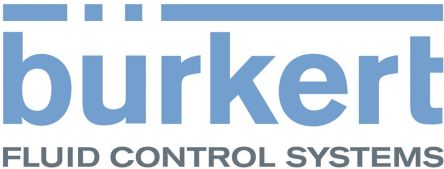
Burkert solenoid valves

SMC solenoid valves

